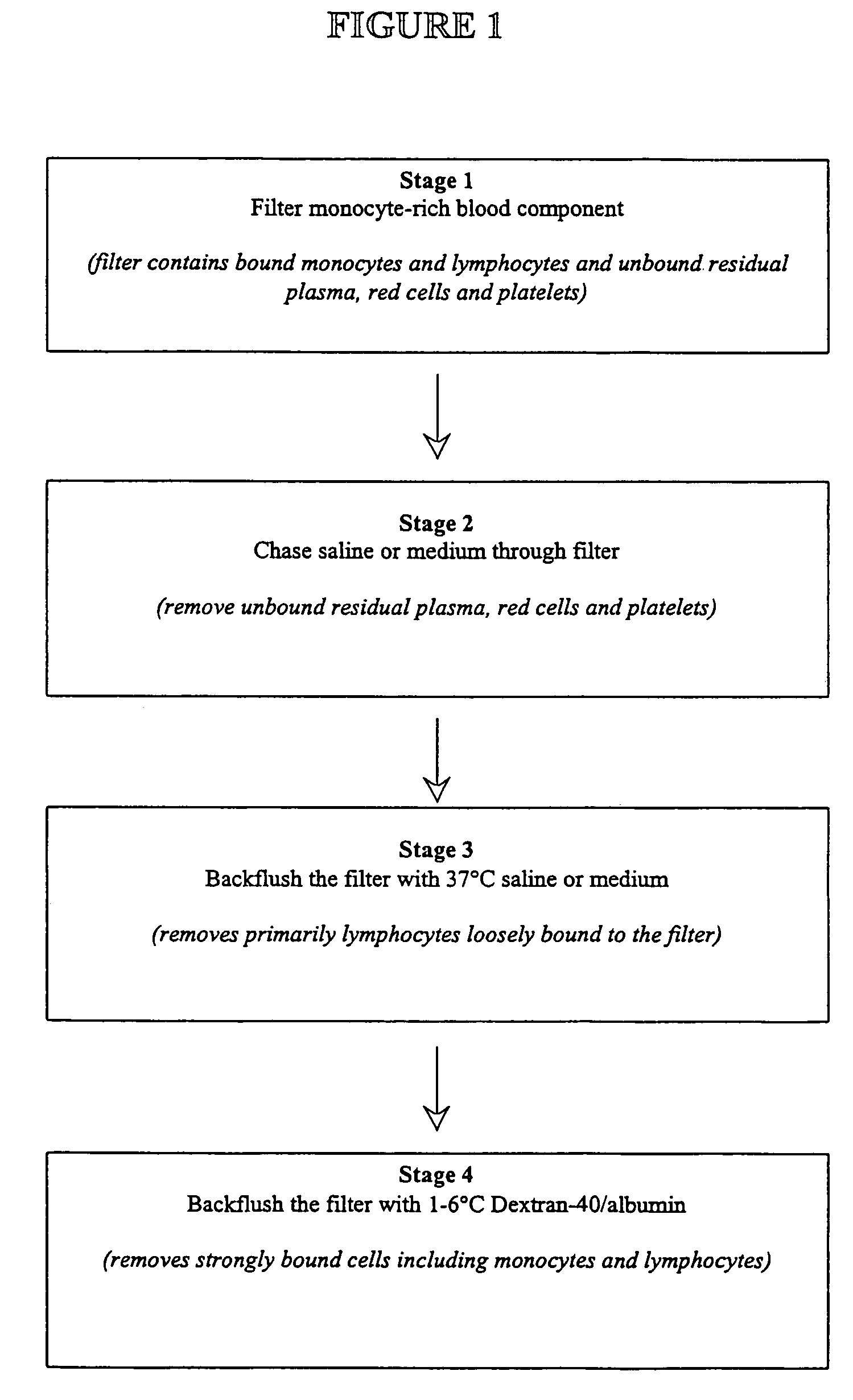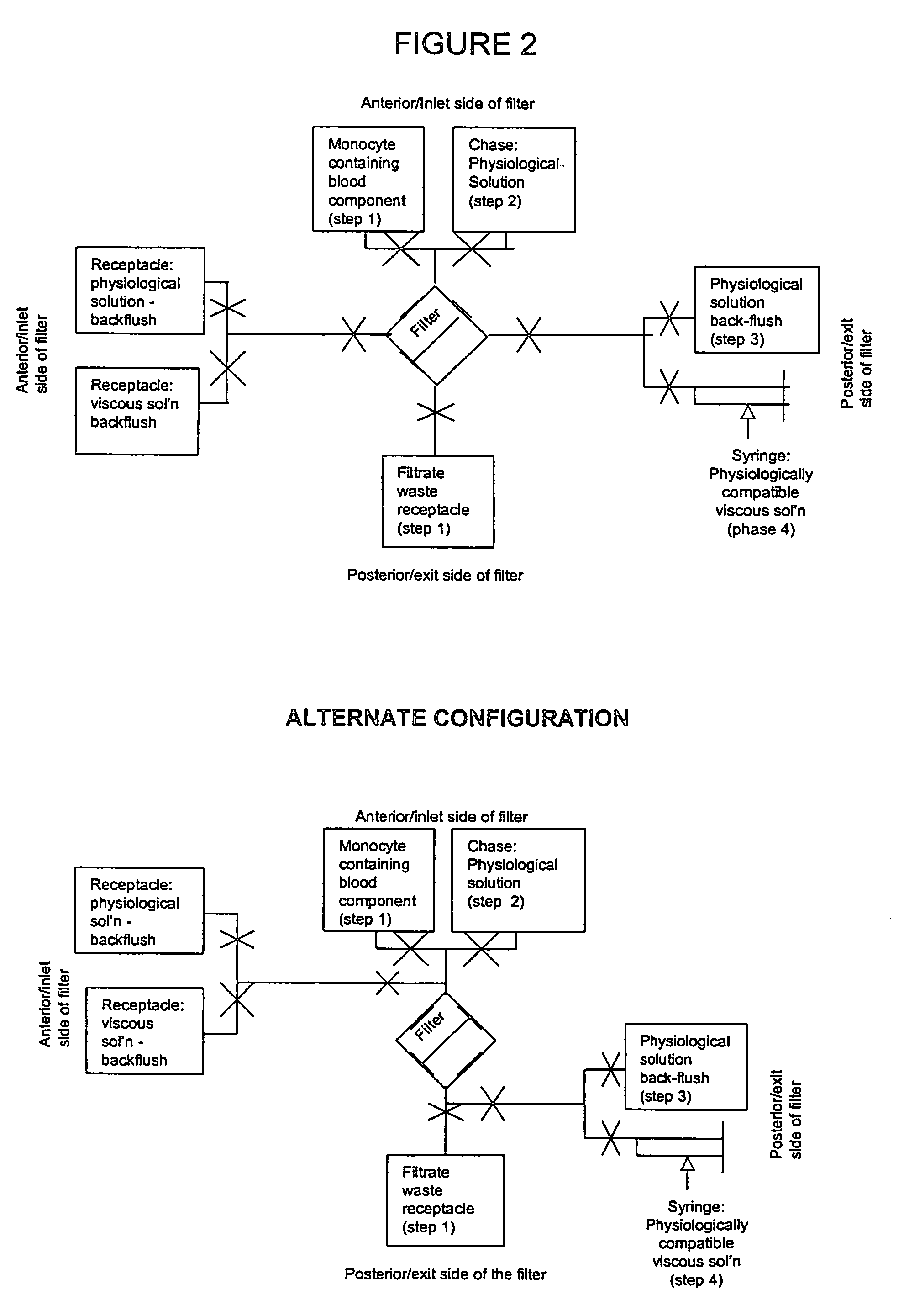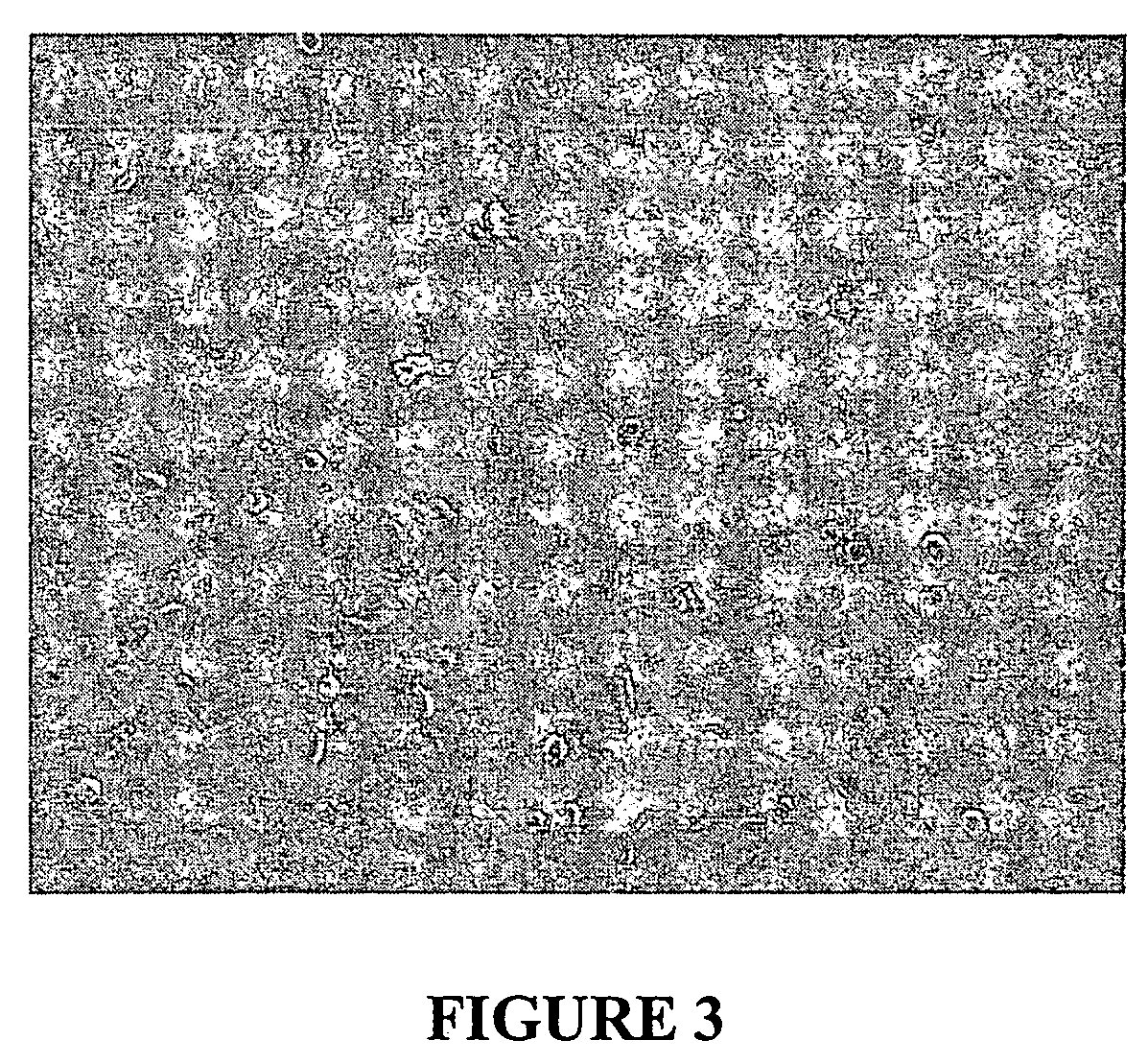Method for enriching adherent monocyte populations
a technology of adherent monocytes and adherent monocytes, which is applied in the field of enriching adherent monocyte populations, can solve the problems of osmotically shocked buffy coat, no closed system elutriator has yet been developed for sterile monocyte isolation, and no method for cryopreservation of adherent monocytes has been reported
- Summary
- Abstract
- Description
- Claims
- Application Information
AI Technical Summary
Benefits of technology
Problems solved by technology
Method used
Image
Examples
example 1
[0031]Monocytes were collected using a mononuclear apheresis procedure. Thirteen apheresis units were collected. Each unit contained 100 mL of approximately 5×109 mononuclear cells and 1×109 monocytes. Each unit was sterile docked to a cord blood collection filter (Asahi Medical Corp.) and the mononuclear suspension was allowed to pass through the filter. When 80-90% of the mononuclear suspension had passed through the filter, the filter was then gently backflushed with 50 mL of 37° C. saline twice. The filter was then strongly backflushed using 50 mL of 1-6° C. Dextran-40 / albumin twice. Isolated white cells from the 1-6° C. backflush fractions were characterized for monocyte purity, monocyte recovery, viability, and phagocytosis.
[0032]Cell viability was measured by standard microscopic methods (Nikon Labophot) using a 30 μM propidium iodide / 20 μM acridine orange stain in phosphate buffered saline.
[0033]Cell populations were determined by fluorescent microscopy using acridine orange...
example 2
[0037]Eight monocyte preparations from Example 1 were subsequently cryopreserved. A suspension of 2×107 monocyte / mL was added to an equal volume of cold HES / DMSO / albumin to the monocyte / macrophage preparation according to standard methods (17). Final concentrations of the cyroprotectants were 6% hydroxyethyl starch (McGaw Inc, Irvine, Calif.), 5% dimethylsulfoxide (Cryoserve, Research Industries Corp., Salt Lake, Utah), 4% human serum albumin (American Red Cross, Hyland, Calif.). One-mL aliquots were aseptically transferred to cryovials and surrounded by 1 inch styrofoam insulation and frozen in a −80° C. mechanical freezer.
[0038]Following frozen storage, cryovials were rapidly thawed in a regulated heating block at 37±3° C. for 8±1 minutes. Thawed preparations were maintained on ice until use. Thawed preparations and prefreeze preparations were analyzed for viability, phagocytosis, and monocyte purity as described in Example 1.
[0039]
TABLE 2(% ± std dev)Pre-freeze1 month frozen stor...
example 3
[0040]Endothelial-like cells can be cultured from monocytes isolated from a cord blood filter. A monocyte preparation was isolated by filtration of an apheresis unit from Example 1. Cells were then processed according endothelial culture techniques as taught by Hebbel and colleagues (35). Cells were centrifuged and resuspended in EGM-2 medium (Clonetics) containing 5% human AB serum, and approximately 107 cells were plated into a well of a cell well plate coated with either collagen or fibronectin (Becton-Dickinson). Cells were incubated at 37° C. with 5% CO2. The following day, non-attached cells and medium was removed by aspiration and replaced with fresh medium. Medium was subsequently changed every one to two days.
[0041]Once cells were nearly confluent, they were passed into additional fibronectin or collagen coated wells or flasks by washing the cells with Hank's balanced salt solution twice and then incubating with 0.5× trypsin plus 1 mM EDTA for two minutes. The trypsin was n...
PUM
| Property | Measurement | Unit |
|---|---|---|
| time | aaaaa | aaaaa |
| physiological solutions | aaaaa | aaaaa |
| physiologically compatible | aaaaa | aaaaa |
Abstract
Description
Claims
Application Information
 Login to View More
Login to View More - R&D
- Intellectual Property
- Life Sciences
- Materials
- Tech Scout
- Unparalleled Data Quality
- Higher Quality Content
- 60% Fewer Hallucinations
Browse by: Latest US Patents, China's latest patents, Technical Efficacy Thesaurus, Application Domain, Technology Topic, Popular Technical Reports.
© 2025 PatSnap. All rights reserved.Legal|Privacy policy|Modern Slavery Act Transparency Statement|Sitemap|About US| Contact US: help@patsnap.com



